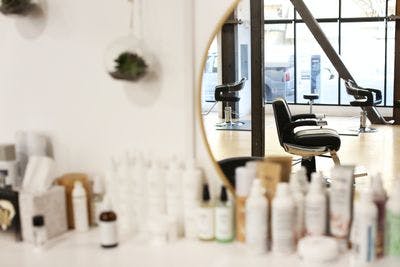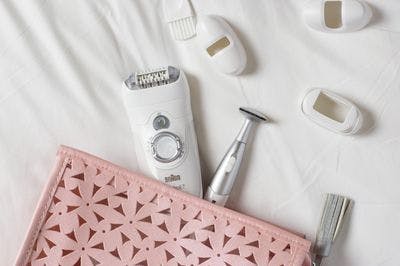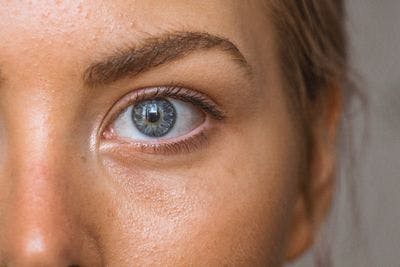Why Do I Have Adult Acne?
Regarding both causes and treatments, adult acne is similar to adolescent acne. Adult acne, however, does have certain distinct characteristics.
As most people might be familiar, acne is a common condition that can last into adulthood. Although acne is generally associated with puberty, it may affect people of all ages.
What Factors Contribute to Adult Acne? Excess oil production pores getting blocked by "sticky" skin cells, bacteria, and inflammation are the four elements that directly lead to adult acne.
In addition to the aforementioned direct elements, certain indirect factors impact the aforementioned direct factors, such as hormones, stress, and the menstrual cycle in women, all of which can influence oil production.
Hair and skincare products, as well as cosmetics, can clog pores. In addition, adult acne can be caused by your nutrition, which can impact inflammation throughout the body.
What Causes Adult Acne Breakouts?
Medications
Adult acne can be a side effect of medications that can cause or worsen acne. A dermatologist can advise you if your drugs are causing or contributing to breakouts.
Steroid inhalers, birth control pills, and testosterone are all common contributors. Drugs containing corticosteroids, testosterone, or lithium are further examples.
Your Mobile Phone

All that on-the-go messaging is wonderful for staying in contact with friends, family, and coworkers. But what about your skin? Not at all. You expose your mobile phone to pollution every day, and when you converse on the phone, you bring this bacteria near to your lips.
When you touch your phone on your face might result in adult acne, a type of pimple caused by friction. Bacteria are also transferred after texting on your phone when you touch your face. So allow your phone to rest now and again, and clean it with an alcohol wipe regularly.
Diet

Certain meals, especially carbohydrate-rich foods like bread, bagels, and chips, have been shown in studies to aggravate acne.
More research is needed to determine whether certain dietary restrictions may assist acne breakouts.
Hairstyling Products

Pomade acne is a term used to describe breakouts produced by hair-care products. Styling products splatter oil across the brow, trapping acne-causing germs in your pores.
Inflamed pores cause redness, pus, and, eventually, blackheads and whiteheads around the hairline and forehead because it clogs up the hair follicles. Your hairdo is also important: Bangs aggravate acne by pushing skin-clogging hair products against your brow.
What you use on your hair frequently ends up on your facial skin if you use products that come with spray applicators which can worsen acne.
Use your hands to apply cosmetics and keep them away from your hairline. Wipe away any excess styling product with a face cleanser after application.
Hormonal Fluctuations
Hormonal variables such as estrogen and progesterone are frequent in female acne, as are hormonal changes caused by pregnancy and menopause.
Acne can be caused or worsened by circumstances such as starting, stopping, or altering a birth control pill or IUD. Acne might appear months after the change. Adult female acne frequently produces "flares" or outbreaks that can be linked to specific times of the menstrual cycle.
Hormonal changes in women in their 30s and 40s, can also cause adult-onset acne and make adult acne worse.
Hair Removal on the Face

You're exchanging one complexion issue, facial hair, for another: bumpy skin. Topical treatments used on the skin before or after hair removal might be comedogenic, clogged pores and encouraging acne.
Itchy bumps following hair removal may not be genuine acne but rather an inflammation of the hair follicle that generates a temporary rash.
Apply a warm compress to your face three to four times daily to relieve the rash. Consult your doctor if this does not work. You may need to take an antibiotic to get rid of the rash. Clean hairy areas before diffusing to decrease germs on your skin, and use non-comedogenic products that won't clog your pores.
Stress

Stress does not cause acne, but it might aggravate it if you already have it. Acne and stress have been linked in studies. When stressed, some hormones can cause adult acne which is known as androgens rise, which boosts oil production in the skin, both of which lead to severe acne or worsen existing acne.
Even "positive" stress, like preparing for a major event, can cause breakouts. That is why a large pimple appears on your wedding day or before a major date.
To treat stress-related breakouts, use acne treatments containing salicylic acid and benzoyl peroxide. Find a strategy to relax your anxieties to avoid future flare-ups.
Thicker Sunscreens
If you have acne-prone skin, you should always use sunscreen, but which sunscreen is best for you? People with acne or acne-prone skin should opt for sunscreens that are oil-free and non-comedogenic.
"Heavier" sunscreens that aren't labeled as oil-free might clog pores and worsen acne. There are two types of active chemicals in sunscreen.
Chemical sunscreens seep into the skin and protect against damaging UV radiation and physical sunscreens that rest on the skin's surface to provide a sun shield. Because they deflect the sun's rays, physical sunscreens are frequently suggested for sensitive skin.
However, traditional sunscreens can be thicker and block pores, whereas chemical sunscreens are undetectable, extremely light, and leave the skin shine-free.
An Undiagnosed Medical Problem
An underlying medical issue that has not been diagnosed can cause adult acne or make existing acne worse. For example, polycystic ovarian syndrome is a common cause of persistent or difficult-to-control acne in women.
A dermatologist will take a detailed history and do an exam, which may involve a blood test, to detect any underlying issues.
Excessive Use of Skin-Care Products
Each year, you may try numerous different skincare products. That's great for the cosmetics business, but it's terrible for your skin. Switching or adding a new product before allowing it to function challenges your skin with new preservatives and active ingredients, which can be unpleasant and trigger adult acne breakouts.
Even anti-acne products might produce pimples if used excessively. So whether you want to battle wrinkles or get rid of zits, please choose one or two products and let them take four to six weeks to work.
Because it takes that long for the skin to turn over, you must allow it that much time to adjust. As a result, you'll save money at the pharmacy and have more room in your medication cabinet.
Is There an Effective Acne Treatment?
Yes. Prescription medicines are the most effective therapy for adult acne. Your dermatologist can advise you on the most effective medication. Topical medicines, cleansers, moisturizers, and oral tablets may all be used to treat acne.
Remember, acne is a medical disease, so seek medical help as you would for any other health concern, and when you do, go for a skincare practitioner who is a board-certified dermatologist.
Anti-Acne Treatments
The most important step in treating acne is to begin an acne treatment regimen. Remember that not every product or ingredient will work for everyone, and many of these items will require you to use them consistently for a few weeks before you notice any difference in your skin. So go slowly but persistently.
If you're not experiencing results or can't locate items that don't bother your skin, consult a dermatologist for advice and, maybe, a prescription therapy.
Salicylic Acid Salicylic acid is a chemical exfoliator known as a beta-hydroxy-acid (BHA). It works by breaking the connections that hold dead skin cells together.
Glycolic acid Glycolic acid is another form of chemical exfoliator that is an alpha-hydroxy acid (AHA).
Lactic acid Lactic acid is another AHA chemical exfoliator. However, lactic acid is considered milder than other forms of chemical exfoliants, so it's an excellent place to start if you're new to exfoliating treatments.
Polyhydroxy acids Polyhydroxy acids (PHAs), which include gluconolactone and lactobionic acid, are another chemical exfoliant that is often regarded as the gentlest.
If you have extremely dry skin or have had negative responses to other chemical exfoliants, you should use a PHA.
Benzoyl peroxide Benzoyl peroxide helps by destroying the acne bacteria while also exfoliating the pores. However, it is not as delicate as chemical exfoliants, so be cautious and hydrate afterward.
Sulfur Sulfur may not have as much evidence for acne as other alternatives, but it is frequently suggested as a therapy for rosacea-related acne-like blemishes.
Azelaic acid Azelaic acid is another rosacea/acne crossover medicine that effectively eliminates rosacea bumps and pimples. However, the precise method by which azelaic acid operates is unknown.
Retinoid But we do know that it works. Retinoid is a derivative of vitamin A and comes in variations that include retinol, retinoic acid and retinol.
Retinoid is easily available OTC because retinol is generally the active component and stronger prescription forms.
Simple, non-irritating skin care solutions like BalmLabs are essential for everyone suffering from acne. Choose soft and suitable products for acne-prone skin, and avoid harsh products that might aggravate the situation.
It's also crucial not to squeeze or pick at acne lesions since this can exacerbate discoloration and scarring.
Almost all cases of acne may be effectively treated with an adequate examination by a board-certified dermatologist and devotion to a treatment program.
After all, adulthood is hard enough without the addition of breakouts but fret not because you can always treat acne thanks to this BalmLabs Product Review!


